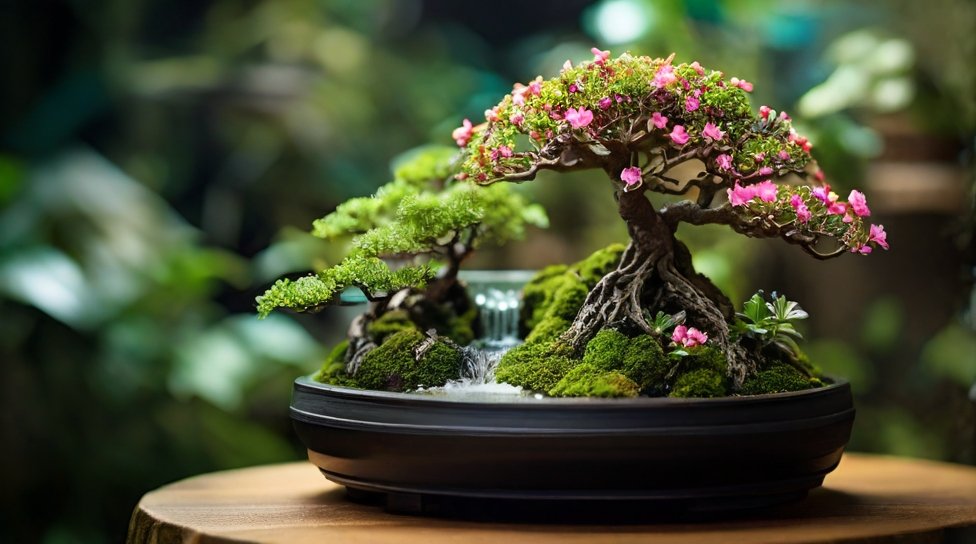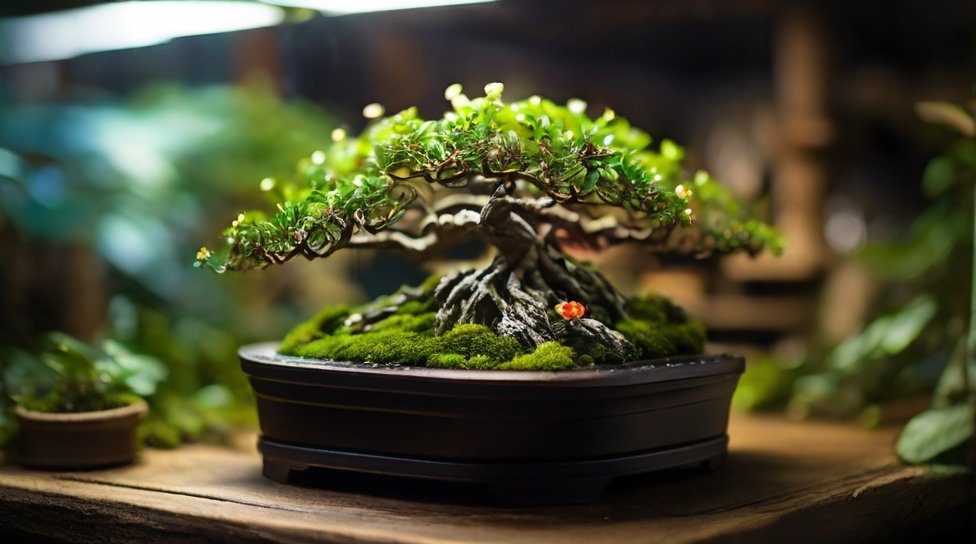Mon. Jul 1st, 2024
Trending News:
Парі Матч Офіційний Сайт Уперед за адреналіномSp5der Hoodies for Halloween Spooky and Stylish Costume IdeasSumac Bonsai: A Guide to Growing and Caring for Your Miniature TreeExploring the Eastern Red Cedar as a Bonsai ChoiceMastering the Art of Douglas Fir Bonsai: A Comprehensive GuideThe Ultimate Guide to Nurturing Norway Spruce BonsaiMastering the Art of Growing Bonsai Banana Trees: A Comprehensive GuideThe Comprehensive Guide to Caring for Your Mugo Pine BonsaiFicus Benjamina Bonsai: A Guide to Care, PruningThe Enigmatic Allure of the Black Spruce Bonsai: A Comprehensive GuideMastering the Art of Japanese Black Pine Bonsai: A Comprehensive Care GuideThe Ultimate Guide to Norfolk Island Pine Bonsai Care: Expert Tips and TechniquesMastering the Art of Growing Birch Bonsai (Betula): A Comprehensive GuideAlberta Spruce Bonsai: A Detailed Guide to Pruning, Growth, and MaintenanceThe Quaking Aspen Bonsai: A Unique Artistry in Miniature ForestryThe Revolutionary Practice of Hydroponic Bonsai: A Comprehensive GuideThe Art and Science of Cultivating Honey Locust Bonsai: A Comprehensive GuideThe Asparagus Fern Bonsai: A Unique Blend of Art and HorticultureMastering Plumeria Bonsai: A Comprehensive Guide to Growing, Pruning, and Caring for Your Unique BonsaiThe Tiger Bark Ficus Bonsai: Tips for Care, Common Issues and Remedies, and Unique FeaturesMastering the Art of Bougainvillea Bonsai Tree Care: An Ultimate GuideCaring for Parsoni Juniper Bonsai: Optimal Growing ConditionsMastering the Art of Cultivating Bodhi Tree Bonsai (Ficus Religiosa): A Comprehensive GuideThe Charming Lemon Cypress Bonsai: A Comprehensive GuideThe Exquisite Art of Growing Rainbow Eucalyptus Bonsai: A Comprehensive GuideMastering the Art of Southern Magnolia Bonsai: A Comprehensive GuideMastering the Art of Yoshino Cherry Bonsai: A Comprehensive GuideCultivating a Fiery Beauty: A Comprehensive Guide to Royal Poinciana (Flame Tree Bonsai)Mastering the Art of Rocky Mountain Pine Bonsai: A Comprehensive GuideCultivating Harmony: A Comprehensive Guide to Ming Aralia BonsaiThe Ultimate Guide to Barbados Cherry Bonsai Care and CultivationThe Art and Care of Colorado Blue Spruce Bonsai: A Comprehensive GuideThe Enchanting World of Wisteria Bonsai: A Comprehensive Care GuideCultivating the Art of Bonsai Pepper Plants: A Comprehensive GuideExploring the Elegance of Literati Bonsai: A Deep Dive into its Poetic StyleCultivating the Jade Succulent Bonsai: A Comprehensive GuideUnveiling the Art of Cascade Bonsai: A Comprehensive GuideArbol Bonsai: The Art and Beauty of Miniature Tree CultivationThe Allure of Acer Rubrum: Cultivating Red Maple Bonsai TreesThe Art and Science of Cultivating Vine Maple BonsaiThe Art and Craft of Growing Loblolly Pine Bonsai: A Comprehensive GuideArt of Growing Hydrangea Bonsai: A Complete GuideThe Art and Beauty of Monterey Cypress Bonsai: A Comprehensive GuideThe Art of Cultivating Sugar Maple Bonsai: A Comprehensive GuideThe Art and Beauty of a Mulberry Bonsai: An Essential GuideCrepe Myrtle Bonsai: A Blooming Marvel in Miniature GardeningThe Ultimate Guide to Hinoki Cypress Bonsai Care and MaintenanceThe Bonsai Palm Tree: A Miniature Delight for Your HomeThe Beauty and Care of Bonsai Lemon TreesHow to Grow and Care for a Bonsai Avocado TreeCaring for Rubber Tree Bonsai: Tips and TechniquesCreating a Tomato Bonsai: A Step-by-Step GuideBonsai Joshua Tree: Expert Gardening Tips and Organic MethodsThe Art of Bonsai Coconut Trees: History, Care, and BenefitsCaring for Your Bonsai Mango Tree: Tips and TechniquesBrazilian Rosewood Bonsai Tree: A Guide to Care and MaintenanceCaring for a Weeping Willow Bonsai Tree: Tips and TechniquesThe History of the Ebony Tree: Cultural Significance and EvolutionThe Shami Tree: History, Medicinal Uses, and Cultural SignificanceThe Purple Pony Plum Tree: A Unique and Versatile Addition to Your GardenThe Gusher Mints Strain: A Comprehensive GuideThe Rosemary Bonsai Tree: A Guide to Growing, Caring, and UsingThe Magic of Oregano Oregon: History, Uses, and Debunking MythsConverting 1/4 Cup Fresh Parsley to Dried: A Comprehensive GuidePopeyes Strawberry Biscuit Calories CountingRefreshing Lemonade Strawberry Squeeze: The Perfect Summer DelightThe Ultimate Guide to Harvesting Carrots: When Are Carrots Ready for Harvest?Discover the Best Tasting Vegetables Ever: A Guide to Nature’s FlavorsTurnip Greens Vs Collard Greens: A Nutritional ShowdownThe Surging Interest in Magic Mushrooms Growing: A Comprehensive LookWhere and How Peanuts Grow The Fascinating Journey of PeanutsGrowing Bonsai from Seed: A Comprehensive Guide for BeginnersA Complete Guide to Garlic Growing StagesTrees That Grow In Water: A Complete Guide to Water GardeningGrowing Cucumbers: A Complete Guide to Cucumber Plant StagesTasty Turnip Green Soup Recipe – Step-by-Step GuideParsnip vs Turnip: The ULTIMATE ComparisonThe Secret to Growing Perfect Cabbage RosesPurple Garlic – An Expert’s Overview Complete GuideThe BEST Sweet and Sour Cabbage Recipe You’ll Ever Taste!Burpless Cucumbers Amazing Health Benefits And GrowingGrowing Lemon Cucumbers: An Amazing In-Depth GuideMini Cucumbers: A Complete Growers GuideAshoka Tree: History, Uses, & Benefits ExplainedHealthy Morning Routine Checklist to Help You Get the Most out of Each DayA Complete Guide to the Delicious and Nutritious Dasheri MangoBonsai Apple Tree Growing Guide: Easy Home Gardening for BeginnersAlphonso Mango Amazing Guide and FactsApple Cider Vinegar and Cranberry Juice BenefitsPumpkin Tree: complete and Amazing GuidePumpkin Apple Muffins: A Delicious and Easy RecipeAlton Brown Pumpkin Pie Complete and Easy RecipeMini Pumpkins: Complete and Amazing GuideThe Perfect Roasting Time: How Long to Bake Pumpkin Seeds at 350°FPumpkin Leaves: Unveiling Their Amazing BenefitsThe Life Cycle of the Pumpkin: Exploring its Growth and Development from Start to FinishThe Ultimate Green Pumpkin Guide: Everything You Need to KnowDelicious Crispy Roasted Pumpkin Seeds: Boiling First!The Northern Spy Apple: A Complete and Amazing Guide to This Delicious FruitMacoun Apple : A Complete and Amazing Guide
Chicago 12, Melborne City, USA
Mon. Jul 1st, 2024
Trending News:
Парі Матч Офіційний Сайт Уперед за адреналіномSp5der Hoodies for Halloween Spooky and Stylish Costume IdeasSumac Bonsai: A Guide to Growing and Caring for Your Miniature TreeExploring the Eastern Red Cedar as a Bonsai ChoiceMastering the Art of Douglas Fir Bonsai: A Comprehensive GuideThe Ultimate Guide to Nurturing Norway Spruce BonsaiMastering the Art of Growing Bonsai Banana Trees: A Comprehensive GuideThe Comprehensive Guide to Caring for Your Mugo Pine BonsaiFicus Benjamina Bonsai: A Guide to Care, PruningThe Enigmatic Allure of the Black Spruce Bonsai: A Comprehensive GuideMastering the Art of Japanese Black Pine Bonsai: A Comprehensive Care GuideThe Ultimate Guide to Norfolk Island Pine Bonsai Care: Expert Tips and TechniquesMastering the Art of Growing Birch Bonsai (Betula): A Comprehensive GuideAlberta Spruce Bonsai: A Detailed Guide to Pruning, Growth, and MaintenanceThe Quaking Aspen Bonsai: A Unique Artistry in Miniature ForestryThe Revolutionary Practice of Hydroponic Bonsai: A Comprehensive GuideThe Art and Science of Cultivating Honey Locust Bonsai: A Comprehensive GuideThe Asparagus Fern Bonsai: A Unique Blend of Art and HorticultureMastering Plumeria Bonsai: A Comprehensive Guide to Growing, Pruning, and Caring for Your Unique BonsaiThe Tiger Bark Ficus Bonsai: Tips for Care, Common Issues and Remedies, and Unique FeaturesMastering the Art of Bougainvillea Bonsai Tree Care: An Ultimate GuideCaring for Parsoni Juniper Bonsai: Optimal Growing ConditionsMastering the Art of Cultivating Bodhi Tree Bonsai (Ficus Religiosa): A Comprehensive GuideThe Charming Lemon Cypress Bonsai: A Comprehensive GuideThe Exquisite Art of Growing Rainbow Eucalyptus Bonsai: A Comprehensive GuideMastering the Art of Southern Magnolia Bonsai: A Comprehensive GuideMastering the Art of Yoshino Cherry Bonsai: A Comprehensive GuideCultivating a Fiery Beauty: A Comprehensive Guide to Royal Poinciana (Flame Tree Bonsai)Mastering the Art of Rocky Mountain Pine Bonsai: A Comprehensive GuideCultivating Harmony: A Comprehensive Guide to Ming Aralia BonsaiThe Ultimate Guide to Barbados Cherry Bonsai Care and CultivationThe Art and Care of Colorado Blue Spruce Bonsai: A Comprehensive GuideThe Enchanting World of Wisteria Bonsai: A Comprehensive Care GuideCultivating the Art of Bonsai Pepper Plants: A Comprehensive GuideExploring the Elegance of Literati Bonsai: A Deep Dive into its Poetic StyleCultivating the Jade Succulent Bonsai: A Comprehensive GuideUnveiling the Art of Cascade Bonsai: A Comprehensive GuideArbol Bonsai: The Art and Beauty of Miniature Tree CultivationThe Allure of Acer Rubrum: Cultivating Red Maple Bonsai TreesThe Art and Science of Cultivating Vine Maple BonsaiThe Art and Craft of Growing Loblolly Pine Bonsai: A Comprehensive GuideArt of Growing Hydrangea Bonsai: A Complete GuideThe Art and Beauty of Monterey Cypress Bonsai: A Comprehensive GuideThe Art of Cultivating Sugar Maple Bonsai: A Comprehensive GuideThe Art and Beauty of a Mulberry Bonsai: An Essential GuideCrepe Myrtle Bonsai: A Blooming Marvel in Miniature GardeningThe Ultimate Guide to Hinoki Cypress Bonsai Care and MaintenanceThe Bonsai Palm Tree: A Miniature Delight for Your HomeThe Beauty and Care of Bonsai Lemon TreesHow to Grow and Care for a Bonsai Avocado TreeCaring for Rubber Tree Bonsai: Tips and TechniquesCreating a Tomato Bonsai: A Step-by-Step GuideBonsai Joshua Tree: Expert Gardening Tips and Organic MethodsThe Art of Bonsai Coconut Trees: History, Care, and BenefitsCaring for Your Bonsai Mango Tree: Tips and TechniquesBrazilian Rosewood Bonsai Tree: A Guide to Care and MaintenanceCaring for a Weeping Willow Bonsai Tree: Tips and TechniquesThe History of the Ebony Tree: Cultural Significance and EvolutionThe Shami Tree: History, Medicinal Uses, and Cultural SignificanceThe Purple Pony Plum Tree: A Unique and Versatile Addition to Your GardenThe Gusher Mints Strain: A Comprehensive GuideThe Rosemary Bonsai Tree: A Guide to Growing, Caring, and UsingThe Magic of Oregano Oregon: History, Uses, and Debunking MythsConverting 1/4 Cup Fresh Parsley to Dried: A Comprehensive GuidePopeyes Strawberry Biscuit Calories CountingRefreshing Lemonade Strawberry Squeeze: The Perfect Summer DelightThe Ultimate Guide to Harvesting Carrots: When Are Carrots Ready for Harvest?Discover the Best Tasting Vegetables Ever: A Guide to Nature’s FlavorsTurnip Greens Vs Collard Greens: A Nutritional ShowdownThe Surging Interest in Magic Mushrooms Growing: A Comprehensive LookWhere and How Peanuts Grow The Fascinating Journey of PeanutsGrowing Bonsai from Seed: A Comprehensive Guide for BeginnersA Complete Guide to Garlic Growing StagesTrees That Grow In Water: A Complete Guide to Water GardeningGrowing Cucumbers: A Complete Guide to Cucumber Plant StagesTasty Turnip Green Soup Recipe – Step-by-Step GuideParsnip vs Turnip: The ULTIMATE ComparisonThe Secret to Growing Perfect Cabbage RosesPurple Garlic – An Expert’s Overview Complete GuideThe BEST Sweet and Sour Cabbage Recipe You’ll Ever Taste!Burpless Cucumbers Amazing Health Benefits And GrowingGrowing Lemon Cucumbers: An Amazing In-Depth GuideMini Cucumbers: A Complete Growers GuideAshoka Tree: History, Uses, & Benefits ExplainedHealthy Morning Routine Checklist to Help You Get the Most out of Each DayA Complete Guide to the Delicious and Nutritious Dasheri MangoBonsai Apple Tree Growing Guide: Easy Home Gardening for BeginnersAlphonso Mango Amazing Guide and FactsApple Cider Vinegar and Cranberry Juice BenefitsPumpkin Tree: complete and Amazing GuidePumpkin Apple Muffins: A Delicious and Easy RecipeAlton Brown Pumpkin Pie Complete and Easy RecipeMini Pumpkins: Complete and Amazing GuideThe Perfect Roasting Time: How Long to Bake Pumpkin Seeds at 350°FPumpkin Leaves: Unveiling Their Amazing BenefitsThe Life Cycle of the Pumpkin: Exploring its Growth and Development from Start to FinishThe Ultimate Green Pumpkin Guide: Everything You Need to KnowDelicious Crispy Roasted Pumpkin Seeds: Boiling First!The Northern Spy Apple: A Complete and Amazing Guide to This Delicious FruitMacoun Apple : A Complete and Amazing Guide
Chicago 12, Melborne City, USA







